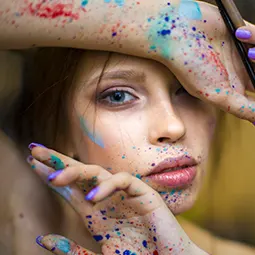Thanks to the work of the American painter and abstract expressionist figure Jackson Pollock, dripping is truly revealed as a technique dedicated to fine art. Although it may seem simple at first, it takes some training and practice to fully master.
History
Dripping is the result of the term All Over painting which appeared around 1948. A new stroke abrogates the previous brushstroke and the relationship between it and the canvas. It is a technique invented by the Ukrainian-American painter Janet Sobel. All Over is a process whereby the elements of the image are distributed more or less evenly over the entire surface of the frame, appearing to extend beyond the edges, thus eliminating the problem of areas. These techniques are the result of action painting. It refers to both technology and the movement of the image. It is the abstract art that emerged in New York in the early 1950s.
Dripping
Dripping is the process of making a blanket of different colours by using a container that the artist moves over the work to drip paint from the bottom of the hole. It can also be done by immersing the brush in a very fluid paint and letting it drip. To achieve a liquid texture, acrylic paint is mixed with water and bindex. Bindex is an acrylic adhesive used for colour preparation, gluing and inlays. It does not yellow and allows the colour to express itself fully in brightness and softness. After drying, it is translucent and indelible, giving a supple and shiny film. Used as a touch-up paint after mixing with water. Bindex has a matt effect.
How to drip
Choosing the support and the paint is important, it is this point that determines the final aspect of the work. The process consists of dipping a brush generously into a bucket of paint and letting it work on a support that lies flat on the floor or table. Then move the brush more or less quickly at a variable distance on the canvas to create zigzags with different effects. Adjusting the thickness of the line relies on changing the size and shape of the brush. A variant of this technique is to use firm, sharp movements to project the painting more or less violently onto a flat or horizontal surface.
